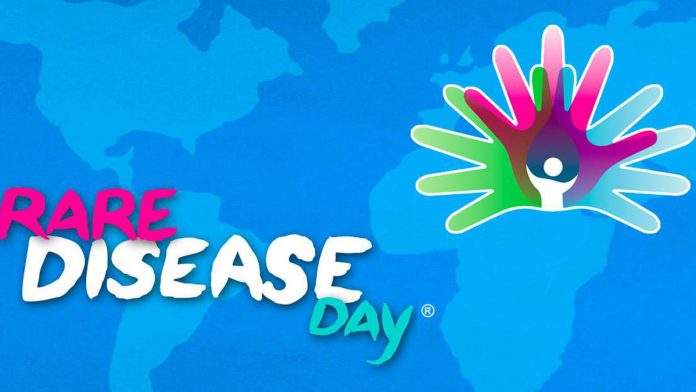This article is in conjunction with Rare Disease Day which falls on Sunday, Feb 28.
KUALA LUMPUR – A drama series titled Rahimah Tanpa Rahim screened recently by a local television channel became the butt of jokes among netizens.
As indicated by its title, the drama depicts the story of a woman born without a uterus which netizens felt was ludicrous because, according to them, no woman could possibly be born without a uterus.
Those netizens, obviously, are unaware of a disorder called Mayer-Rokitansky-Küster-Hauser (MRKH) syndrome which occurs in females and affects their reproductive system. The affected women usually do not have menstrual periods due to the absent uterus.
Diseases such as MRKH syndrome, water allergy syndrome, foreign accent syndrome, laughing death syndrome, Alice in Wonderland syndrome and fibrodysplasia ossificans progressiva are rare diseases. The term rare disease is used to identify any illness that affects a small percentage of the population and is frequently debilitating.
Among the rare diseases that occur in Malaysia but are rarely talked about are Marfan syndrome, Prader-Willi syndrome and osteogenesis imperfecta.
Worldwide, there are more than 7,000 types of rare diseases, which are also referred to as orphan diseases.
In Malaysia, a total of 470 types of rare diseases were officially registered with the Ministry of Health (MOH) as of December 2020.
Diagnosis
According to the National Governance Committee for Rare Diseases, in Malaysia, the term rare disease refers to any disorder that affects a small portion of the population or one in 4,000 people. Rare diseases can affect the nerves, brain, kidneys and metabolic system.
An estimated 80 percent of rare disorders are genetically inherited and many cases are untreated or undetected as most medical practitioners are unable to recognise the symptoms due to lack of knowledge and experience.
Universiti Malaya Medical Centre (UMMC) paediatrician and clinical geneticist Prof Dr Thong Meow Keong acknowledged that the public, in general, has very little understanding of rare diseases and some communities even attach superstitious elements to the occurrence of such disorders.
“It’s sad that diagnosis (of rare diseases) is delayed due to such superstitious beliefs. Late diagnosis has caused the death of some 25 to 30 percent of patients suffering from rare diseases,” he told Bernama.
Not enough experts
In 1995, Malaysia’s first rare disease research and treatment centre – a genetics clinic with genetics counselling services, and genetics and metabolism unit – was established at the Paediatrics Department at Universiti Malaya’s Faculty of Medicine to raise the profile of rare disorders.
Although over 25 years have passed since its establishment, not much has been achieved.
“Currently, there are only 14 clinical geneticists (in Malaysia) and they are attached to Kuala Lumpur Hospital (HKL), UMMC, Universiti Sains Malaysia Hospital, Universiti Kebangsaan Malaysia Medical Centre (PPUKM) and Penang Hospital,” said Dr Thong.
To make things more complicated, he said Malaysia’s public services sector does not offer any post for genetics counsellors, thus making it difficult for government health facilities to offer genetics counselling services to patients from the B40 group.
He believes that the nation needs another 60 geneticists and 120 genetics counsellors to treat rare disease cases more effectively. The capacity to carry out diagnosis and treatment of rare disorders should also be extended to more hospitals nationwide, including Sabah and Sarawak.
He also said that although the government has been giving its attention to rare diseases and provides financial allocations to MOH hospitals for their diagnosis and treatment, the funds are insufficient due to the high treatment costs, starting from diagnosis to post-treatment therapies.
Citing spinal muscular atrophy as an example, Dr Thong said the cost of the gene therapy to treat this rare disease – a progressive genetic disorder that affects the nervous system and muscles – can entail millions of ringgit.
He added that the situation became more challenging when university hospitals under the purview of the Ministry of Higher Education stopped receiving allocations for the treatment of patients with rare diseases.
“This has affected students pursuing medicine and postgraduate studies, as well as research in the field of rare diseases,” he said.
Official registry
Dr Thong, who is also an advisor to the Malaysian Rare Disorders Society, also hoped that a rare disease registry or database would be established to collect data on rare disorders and prepare annual reports complete with information pertaining to the number of patients with rare diseases in this country.
“In addition to helping with proper budget planning for patients, the system would also enable each doctor to submit a report on the patients whose treatments they are managing to the database concerned and through this, we can do further research,” he added.
PPUKM consultant paediatrician and clinical geneticist Prof Dr Zarina Abdul Latiff, meanwhile, said one of the main challenges facing patients afflicted with rare diseases is the lack of understanding among the public on their condition.
The fact that rare diseases are difficult to diagnose makes things more difficult for the patients, she said, adding that there are no specific diagnostic tests for disorders such as inborn errors of metabolism (IEM), a group of rare genetic disorders in which the body cannot properly turn food into energy.
“Although public awareness is on the rise, a lot more needs to be done to enable our society to understand rare diseases better,” she said, adding that different types of rare diseases are being discovered every day and it can be present anywhere regardless of age, gender, socioeconomic status and geographical area.
Acknowledging that the nation has made some strides in the field of rare diseases, Dr Zarina said compared to 15 years ago, Malaysia now has geneticists who can perform tests at the Institute of Medical Research, HKL and university hospitals that conduct studies on rare diseases.
“These facilities have their own list of diseases and genetic tests for disorders such as IEM, Marfan syndrome and Prader Willi Syndrome.
“The availability of the latest methodologies and studies enables medical experts to identify any defect in a child from the time he or she is born,” she explained.
Screening newborns
HKL consultant in clinical genetics and inherited metabolic diseases Dr Ngu Lock Hock opined that the time has come for society to be educated on the importance of having newborn babies screened more comprehensively to detect any disease, particularly IEM.
“Currently, newborn babies are screened to detect only glucose-6-phosphate dehydrogenase deficiency and congenital hypothyroidism. In MOH hospitals, screening for IEM is only done in cases where the baby has a family history of certain diseases,” he said, adding that about 500 cases of rare diseases, including IEM, are referred to HKL every year.
He said a more comprehensive screening of newborns will enable them to receive treatment early which will improve their survival rate in the event a rare condition is detected.
A total of 7,844 patients with rare diseases and their family members have been referred to HKL since the establishment of its Genetics Department in 2009.
Among Asian countries, Malaysia is said to offer the best treatments for rare diseases.
At HKL, three categories of treatment for rare diseases are available. The first category is for diseases that have no specific treatment and patients would be offered services such as physiotherapy, occupational therapy, speech therapy, symptomatic treatment and rehabilitation.
The second category is for diseases that can be treated with medications or a special diet. The main challenge facing such cases, which comprise five percent of the rare disease cases referred to HKL, is the length of time it takes the experts to diagnose their conditions accurately.
According to Dr Ngu, the majority of cases in the second category involve IEM that can be treated with medication and a diet plan which includes special formula milk.
The third category, meanwhile, is for diseases that can be treated via enzyme replacement therapy (ERT). So far, 50 patients have received this treatment at HKL.
“However, ERT is very costly… each dose of the enzyme replacement, which is done via intravenous infusion, can cost between RM4,000 and RM18,000,” he added.













